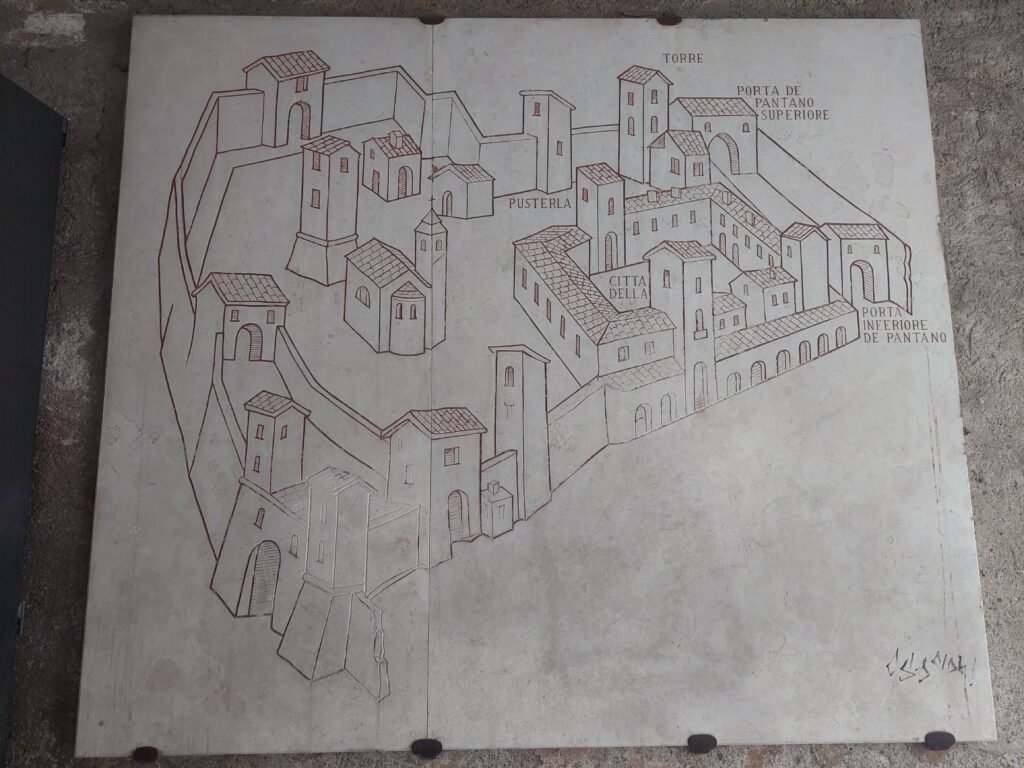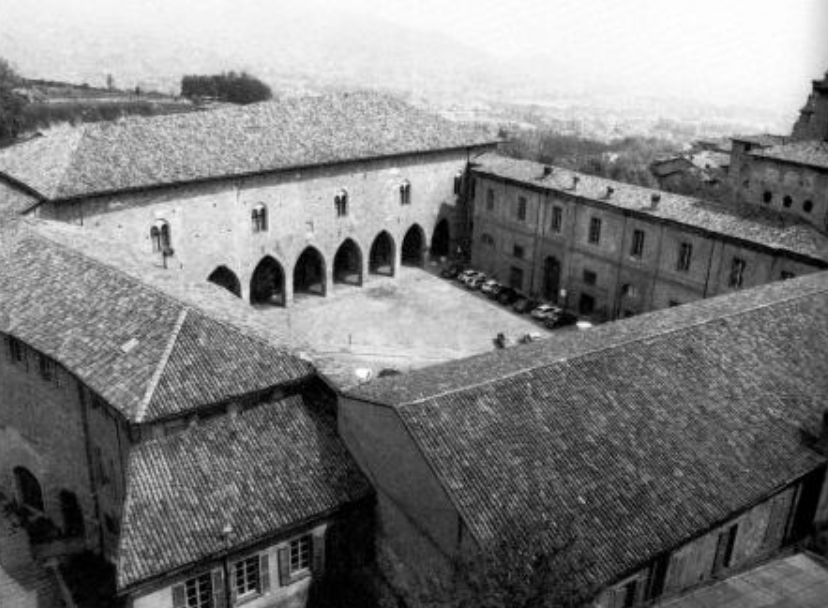The Cittadella Viscontea, located in the northern part of Bergamo’s Città Alta, is a medieval fortress that stands as a powerful reminder of the city’s tumultuous history during the 14th and 15th centuries. Built by the Visconti family, one of the most influential dynasties in Northern Italy, this complex served both defensive and administrative purposes.
Today the Cittadella Viscontea is home of important museums and events. But per se it is a prominent historical site, offering visitors a glimpse into the city’s medieval past and the architectural grandeur of the Visconti rule.
Historical Background
The origins of the Cittadella Viscontea date back to the 14th century, during a time when Bergamo was frequently caught in the crossfire of political conflicts between the Guelphs and Ghibellines, factions that supported either the papacy or the Holy Roman Empire. By 1331, Bergamo had lost its status as an independent commune and became part of the Kingdom of Bohemia under John of Luxembourg. However, this period of foreign rule was brief, as the powerful Visconti family of Milan soon took control of the city in 1332, under the leadership of Azzone Visconti.
The Visconti dynasty aimed to consolidate their power in the region, and in 1355, Bernabò Visconti began the construction of the Cittadella as part of a broader strategy to fortify Bergamo. The fortress was built atop Colle San Giovanni, strategically positioned to overlook the surrounding landscape and ensure control over both the city and the neighboring territories. This fortification became an integral part of the defensive system in Città Alta, complementing the existing Rocca fortress and other military installations.
The Cittadella was more than just a military outpost—it also housed administrative buildings, including the residence of the Visconti governors and various military officers. The fortress symbolized Visconti dominance over Bergamo, serving as a means to enforce their rule and suppress any internal rebellions or external threats.
Architectural Highlights
The Cittadella Viscontea was designed as a robust military structure, featuring thick walls, fortified towers, and gates. Though much of the original complex has been lost to time, several key elements still remain, giving visitors a sense of the fortress’s original scale and grandeur.

One of the most notable features is the Porta di Sant’Alessandro, a gate that once formed the main entrance to the Cittadella. This gateway is a significant remnant of the medieval fortifications and showcases the defensive architecture typical of the period. The structure is characterized by its solid stone construction and the remnants of towers that would have once flanked the entrance, offering protection against invaders.
Another key feature is the Torre della Campanella, a bell tower that was part of the fortress’s military installations. Although it no longer functions in its original capacity, the tower remains a historical landmark and adds to the Cittadella’s medieval atmosphere.
The Cittadella also included various internal courtyards and military barracks, where soldiers would have been stationed. Though many of these structures have not survived the centuries, archaeological excavations have revealed the foundations of these buildings, providing valuable insight into the daily operations of the fortress during its peak.
Modern Use and Significance
Today, the remnants of the Cittadella Viscontea serve as an important cultural and historical site within Bergamo’s Città Alta. While much of the original fortress has been repurposed or altered over the centuries, the surviving portions offer a fascinating look into medieval military architecture and the city’s history under Visconti rule.
In modern times, the Cittadella complex houses important museums and institutions. The Civic Museum of Natural Sciences and the Archaeological Museum are located within the old fortress walls, offering visitors a chance to explore Bergamo’s natural history and archaeological heritage while surrounded by the remnants of this historic fortification.
The courtyard of the Cittadella is often used for public events, flea markets and exhibitions, bringing life back to this medieval structure and allowing residents and tourists alike to enjoy its historical significance. The space has also become a gathering point for locals, blending the city’s rich past with contemporary cultural activities.
Cultural and Historical Legacy
The Cittadella Viscontea stands as a lasting symbol of the power struggles that shaped Bergamo’s history. Its construction by the Visconti dynasty marked the beginning of a new era for the city, one in which external forces played a decisive role in its governance and development. As part of the complex defensive system in Città Alta, the Cittadella helped to protect Bergamo from external threats and maintained order within the city.
Although the fortress no longer serves its original defensive purpose, it remains an important cultural and historical landmark, reminding visitors of Bergamo’s strategic importance during the medieval period. Its preservation and incorporation into the modern cityscape allow the Cittadella to continue playing a role in Bergamo’s identity, connecting the past with the present.

The Cittadella Viscontea offers a fascinating glimpse into Bergamo’s medieval history and the powerful Visconti family who once ruled over the city. Its enduring architectural features, combined with its modern use as a cultural hub, make it a must-visit destination for those exploring the rich history of Città Alta. Whether you are a history enthusiast or simply looking to experience the unique atmosphere of this ancient fortress, the Cittadella Viscontea is a site that embodies the enduring legacy of Bergamo’s medieval past.





